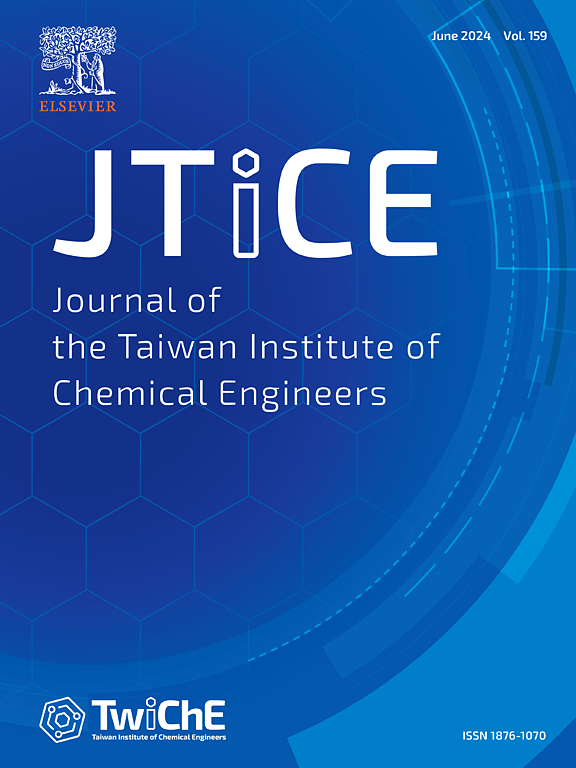Numerical analysis of lithium-ion battery performance with new mini-channel configurations implementing hybrid nanofluid
IF 5.5
3区 工程技术
Q1 ENGINEERING, CHEMICAL
Journal of the Taiwan Institute of Chemical Engineers
Pub Date : 2025-03-16
DOI:10.1016/j.jtice.2025.106074
引用次数: 0
Abstract
Background
The thermal management of lithium-ion battery packs was thoroughly investigated in the current study, aiming to enhance cooling efficiency through innovative design approaches. This research evaluates the performance of four distinct mini-channel configurations—Smooth (simple rectangular), Grooved, Tooth, and Pin Fin—integrated with a hybrid nanofluid composed of water and Fe3O4-SWMCT nanoparticles.
Methods
These advanced cooling channels are designed to improve thermal regulation by optimizing the thermal characteristics of the system. The study employs a conduction-based model to simulate the unsteady heat source conditions representative of battery discharge cycles. Validation against published data confirms the high accuracy of the modeling approach.
Significant findings
Results demonstrate that the incorporation of nanoparticles in the cooling fluid contributes to a slight reduction in battery temperature, with cells located near the cooling channels exhibiting more uniform temperature distribution. Notably, the channel configuration with Pin fins proves to be the most effective, achieving a Nusselt number 5.03 times greater than that of the Smooth rectangular duct, indicating significantly improved heat transfer performance. Conversely, the channel design with Teeth showed the poorest hydraulic performance, with performance value of 0.84, while the Pin Fin configuration achieved the highest performance value of 2.62, signifying superior overall performance. This study highlights the crucial impact of channel geometry and cooling fluid composition on behavior of battery packs. By advancing the design and material use in cooling systems, the research contributes valuable insights for enhancing battery safety, efficiency, and longevity.

求助全文
约1分钟内获得全文
求助全文
来源期刊
CiteScore
9.10
自引率
14.00%
发文量
362
审稿时长
35 days
期刊介绍:
Journal of the Taiwan Institute of Chemical Engineers (formerly known as Journal of the Chinese Institute of Chemical Engineers) publishes original works, from fundamental principles to practical applications, in the broad field of chemical engineering with special focus on three aspects: Chemical and Biomolecular Science and Technology, Energy and Environmental Science and Technology, and Materials Science and Technology. Authors should choose for their manuscript an appropriate aspect section and a few related classifications when submitting to the journal online.

 求助内容:
求助内容: 应助结果提醒方式:
应助结果提醒方式:


